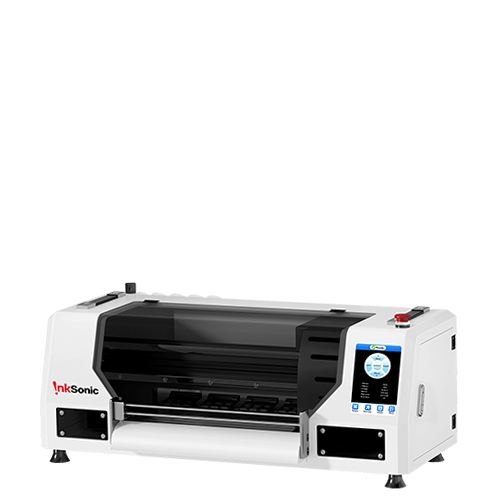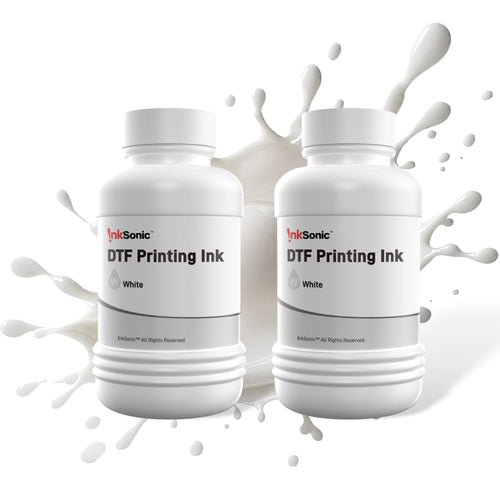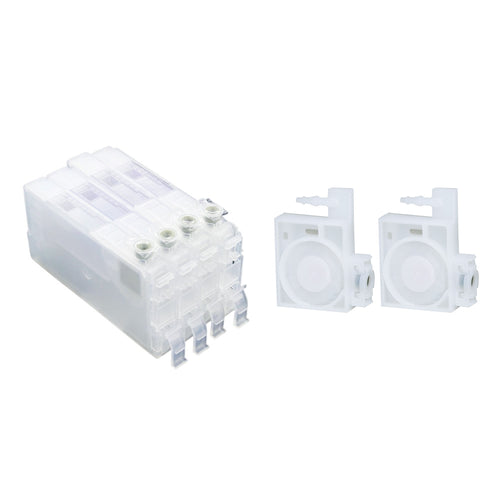DTF (Direct to Film) heat transfer technology has become mainstream in the garment printing industry in 2025.
Okay, let’s get real. Doing DTF (Direct-to-Film) heat transfers seems simple: You print the design on transfer film using a DTF printer, apply powder and cure it, then use a heat press to transfer the design onto fabric. The whole process is fast, vibrant, and produces wash-resistant and wear-resistant results.
Sounds easy, right? But have you noticed how, with the exact same equipment and materials, some people’s prints come out flawless and vibrant while yours might peel, look dull, or have edges that just won't stick?
The difference lies in those small tricks no one talks about. After years of trial, error, and fixing way too many mistakes (mostly mine!), I’m finally spilling the beans on 15 DTF tricks I usually keep to myself.
This article will share the practical but often overlooked details of the three stages of the transfer “before-during-after”. Use them wisely in 2025! 🤫
Before Transfer: Prep Right, Win Half the Battle

1. Manage your colors before printing
Design looks vibrant on screen but turns out dull on fabric? That’s likely a color management issue. Always select the correct print settings, resolution, and profiles to ensure what you see is what you get.
2. Let the print sit before curing
Don’t rush. Give the printed film a few minutes to fully dry before applying powder or curing. This improves glue bonding and prevents color loss.
3. Avoid working in humid environments
Moisture makes the glue powder clump, leading to fuzzy edges and poor adhesion. Keep your workspace dry—especially during rainy seasons or in basements.
4. Use a lint roller to prep the fabric
Floating fibers are a damn nightmare. They mess up adhesion, especially around edges. Roll off every bit of lint, especially on dark fabrics, to ensure your print sticks cleanly.
Alternatively, choose high-quality, smooth fabrics from the start and save yourself some trouble.

5. Pre-press the fabric to flatten it
Wrinkles ruin everything. If the fabric’s not flat, neither is your print. Use an iron or heat press to flatten it for a few seconds before transferring for a cleaner result.
During Transfer: Temperature, Pressure & Timing Rule Everything

6. Preheat your heat plate
Skipping this step? That’s rookie. A cold press plate can drop your actual transfer temp, leading to poor adhesion, fading prints, and ruining your print. Preheat the plate for 10–15 seconds to stabilize the temperature before pressing.
7. Control your ink output
Too much ink can cause bleeding or heavy hand-feel; too little results in dull, weak images. Optimize your printer settings, especially the thickness of the white ink base, to strike the right balance.
8. Use parchment or non-stick sheets
Placing a layer of parchment paper or a non-stick sheet over the design during heat pressing prevents sticking and helps distribute heat evenly for a flatter, more refined finish.
9. Trim the clear film border before pressing
That transparent border around your print? It’ll leave a nasty glue outline if not trimmed. Cut it off before transferring to level up the final appearance.
10. Do a second press for extra finish
After removing the film, try a second light press—especially around the edges. This improves durability, enhances the hand-feel, and gives the design a cleaner, more professional look.
However, during the second press, it is recommended to use a Teflon sheet or a piece of denim fabric. Repeated direct heat pressing can easily scorch or yellow the garment. Using Teflon or denim not only protects the fabric from the heat plate but also reduces the sticky, plasticky feel of DTF prints, helping the design bond more naturally with the fabric.
11. For large designs, press in sections
Trying to press a huge design all at once? Good luck with that mess. If your design is large or complex, pressing in one go often results in uneven pressure. Press the design in sections, especially focusing on the edges and finer details, to ensure proper adhesion.
After Transfer: Finishing Touches for Long-Lasting Results

12. Cold peel the film is safer
Don’t rush to peel the film while it’s hot! Peeling too early can cause smudging, stretching, or lifted edges. Instead, wait for the film to cool to room temperature—cold peeling ensures better design integrity, offers greater stability, and results in a matte finish that looks more refined and premium compared to the glossy finish of hot peel.
13. Don’t fold or stretch right away
Just pressed it? Chill. Folding or stretching the garment right after transfer may compromise the adhesive layer. Let it sit 3–5 minutes before folding or packing so the glue layer sets properly. Don’t mess up the finish.
14. Test one shirt before batch production
Even small variations between fabric batches can affect how the transfer reacts to heat and pressure. Always test one before going full production to avoid a major asshole of a mess.
15. Store leftover films properly
Just tossing your leftover films in a drawer? Dumb move. Exposure to air and moisture can ruin them over time. Store them in a sealed bag with desiccant in a cool, dark place.
Final Word: Small Details, Big Impact
The power of DTF lies in its flexibility and high-quality output. But to master it, you need more than cool equipment—you need to nail the tiny details.
These 15 tricks are hard-earned secrets I picked up over the years. Now that you know them, don’t keep them to yourself. Let every shirt you print be worth every cent your customers pay.
































